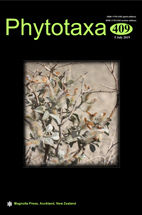Abstract
Cornus sunhangii, a new species from Bari, at an elevation of 1988 m, in north Mêdog County, Tibet, China, is described. It is morphologically similar to C. capitata, but differs in the infructescence size, the length of the peduncle, the number of trichomes. The status of C. sunhangii, which is the earliest divergent in Cornus subg. Syncarpea, was confirmed by phylogenetic analyses using four chloroplast markers (atpB, rbcL, matK and ndhF). It has potential economic benefits, since similar species of Cornus have been used as food, oil, wood production and ornament.

